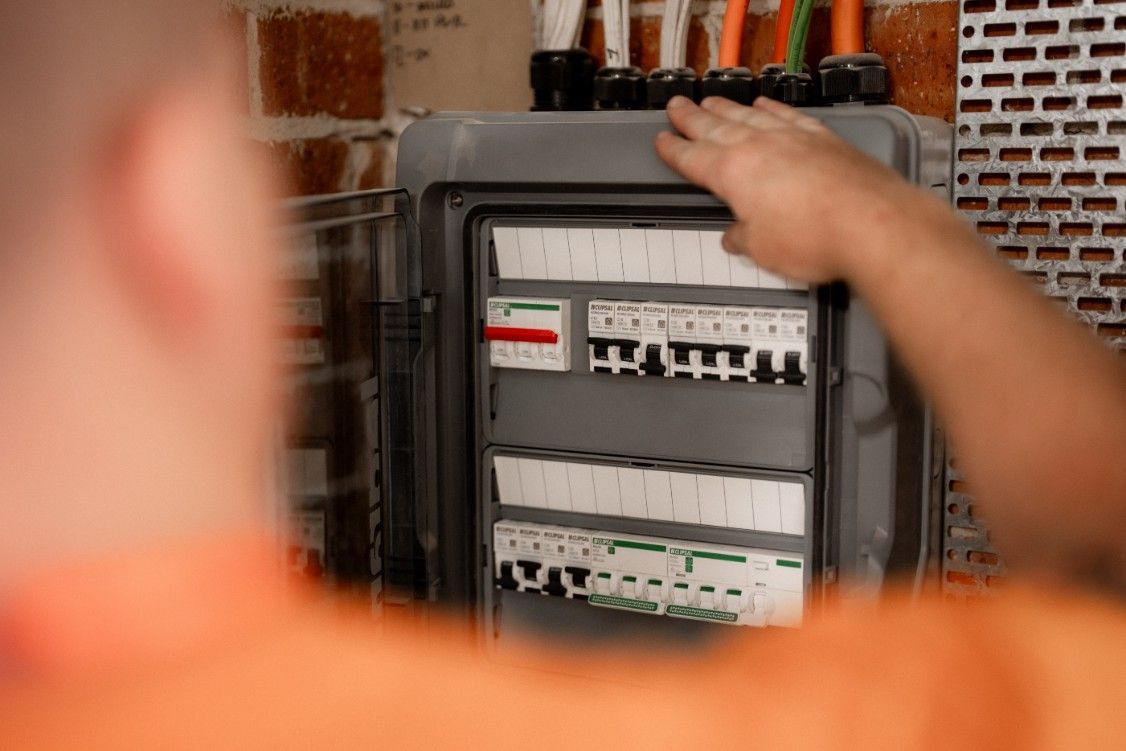How to Tell If Your Wiring Needs Replacement
Faulty wiring isn’t something you should ignore. Often, the early warning signs are subtle — a flicker of light here, a faint buzz there — but they can escalate into serious safety risks: electrical fires, shocks, damage to appliances, even major structural issues. If you think your wiring might be ageing, overloaded, or unsafe, this guide helps you spot the warning signs early so you can arrange a professional inspection or replacement before it’s too late. Below are eight ways to tell whether your wiring needs replacing or a major repair.
Flickering Lights Might Be More Than Just an Inconvenience
Lights that flicker, dim unexpectedly, or change intensity may seem minor — but they can point to loose connections or wiring that can no longer safely carry the load.
- The circuit might be overloaded if multiple lights flicker when you switch on an appliance.
- Loose or corroded connections can cause voltage fluctuations, dimming or flashing.
- If flicker persists across different light fittings in your home, the issue likely lies in the wiring or circuit, not just a bulb or fixture.
Outlets That Spark or Smell Like Burning Are Red Flags
When outlets or switches emit smells, heat, or sparks, they are serious warning signs that something is wrong behind the walls.
- Sparking can mean exposed copper, short circuits, or broken insulation. These conditions are dangerous.
- A burning or acrid smell often indicates overheating — possibly melting insulation, overloaded wiring, or damaged internal connections.
- Warm or discoloured outlet plates show heat buildup, which may further deteriorate wiring and lead to a fire risk.
Your Home Still Has Old Wiring Systems Like VIR or Ceramic Fuses
Some older wiring systems were never designed to cope with modern electrical demands. Your home may no longer be safe if it still has vintage wiring.
Common outdated wiring systems:
- VIR (Vulcanised India Rubber) cables or cloth insulation
- Ceramic fuse boxes instead of modern circuit breakers or consumer units
- Aluminium wiring or knob-and-tube styles used decades ago
These old systems often lack modern protective elements (like proper insulation, grounding, safety switches) and may degrade with age, exposure or moisture.
Frequent Breaker Trips Could Be a Sign of Overload or Faulty Circuits
Circuit breakers are meant to trip when there’s too much current or a problem in the circuit. But when they trip often, that is not normal and suggests wiring issues.
- If new appliances or multiple devices cause trips, circuits might be under-designed or overloaded.
- Wiring that is damaged or has loose connections can leak current, causing unpredictable breaker behaviour.
- Constant trips are a sign that wiring capacity or safety features may be compromised, warranting rewiring or upgrading circuits.
DIY Wiring or Amateur Installations Are Accidents Waiting to Happen
Even with the best intentions, amateur electrical work can lead to unsafe conditions that are hard to remediate later.
- Incorrect wire gauge, poor joints, non‑compliant materials or methods may cause overheating or fire risk.
- Hidden issues like exposed conductors or improper protective covering may have been introduced.
- A licensed electrician can assess all wiring, correct unsafe installations, and ensure everything meets current standards.
Buzzing Sounds or Vibrations Behind the Walls Are Never Normal
Noisy wiring is a sign that something is wrong. Sounds like buzzing, humming, crackling, or vibrations are irritating and can hint at serious safety issues.
- Buzzing or crackling suggests loose wiring, arcing or connections making intermittent contact.
- Vibrations or humming when a device is plugged in or switched on often mean internal wiring is under stress or improperly connected.
Example: If a wall switch vibrates slightly even with nothing connected, it might mean wires inside are loose or overloaded. That can lead to arcing, overheating, and eventually fire.
Your Switches or Power Points Are No Longer Secure
Loose switches, wobbly power points or ones that move when you use them aren’t simply cosmetic issues — they are safety hazards.
- A loose switch may expose wiring or allow moisture to damage the circuit.
- Movement could damage connections from vibration or repeated stress, leading to heat buildup or shorting.
- If switches feel loose, creak when operated, or power points wiggle when you plug something in, it’s time for inspection and likely replacement or rewiring.
You’re Planning a Renovation or Adding Major Appliances
When you make big changes, it’s the perfect time to check the safety and capacity of your wiring.
When electrical rewiring is commonly done:
- Adding high‑demand appliances like air conditioning units, electric vehicle chargers, ovens or heat pumps.
- Extending parts of your home, creating new rooms, or altering the layout — the wiring path changes.
- Upgrading from fuse boxes to modern circuit breaker panels or switching to safety devices such as safety switches or ground fault circuit breakers.
These projects often reveal hidden wiring deficits — aging cables or undersized circuits struggling with modern loads. Taking action now saves risk and cost.
Why Faulty Wiring Is a Serious Safety Risk
Ignoring these warning signs can lead to:
- Fires caused by overheating, arcing or loose wiring.
- Electric shocks or electrocution from exposed or damaged conductors.
- Damage to appliances and electronics from voltage fluctuations.
- Higher running costs and inefficiencies. Old insulation or damaged wiring wastes energy.
Because of the risk, a licensed electrician should always replace or rewire faulty wiring using modern wiring standards and safety devices.
What You Should Do If These Signs Appear
Spotting one or more of the above signs doesn’t automatically mean you need to rip out all your wiring — but it does mean you should act quickly. Electrical faults rarely fix themselves and tend to worsen over time, increasing the risk to your home and safety. The next step is to involve a licensed electrician who can conduct a detailed assessment and recommend the safest path forward.
- Don’t try major repairs unless you’re qualified. Working with electricity without a license or training can be dangerous or illegal.
- Schedule a thorough inspection from a professional. They’ll test wiring integrity, load capacity, grounding, and safety compliance.
- Prioritise urgent issues first: outlets that spark, burning smells, warm switches or discoloured fittings.
- Plan to rewire or upgrade panels if your wiring is very old, undersized, or has multiple symptoms.
Upgrade Your Wiring with a Licensed Shellharbour Electrician
If you notice any warning signs — flickering lights, sparking or burning smells, loose or dated wiring systems — it’s time to seek expert help. At John McEwan Electrical, we specialise in new electrical wiring and electrical rewiring to bring homes up to safety standards. Don’t wait until a minor fault becomes a serious risk; call our electrician in Shellharbour to arrange a safety inspection.








